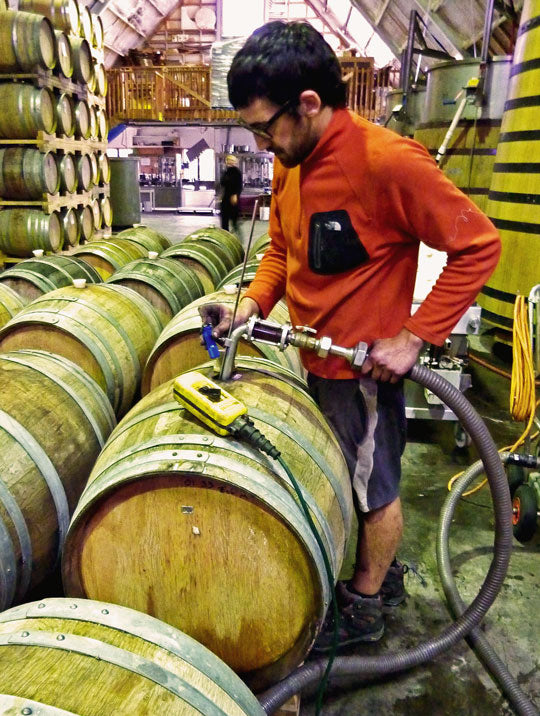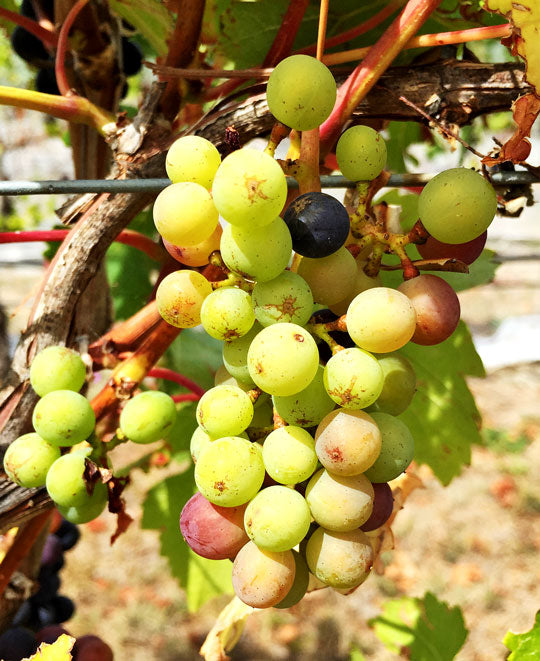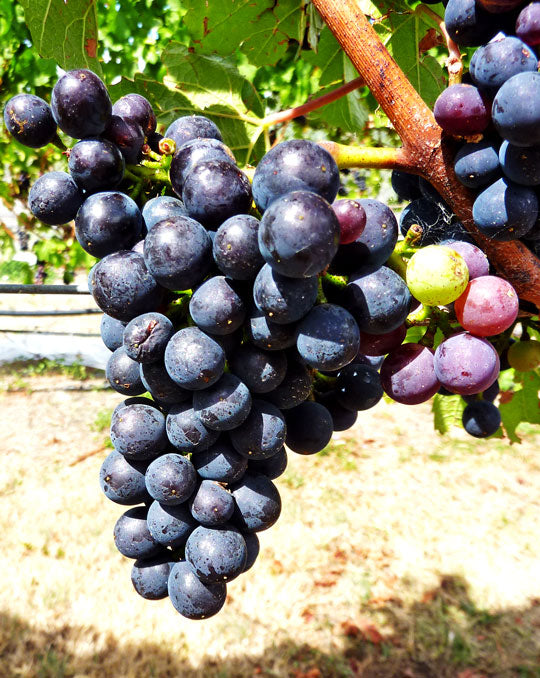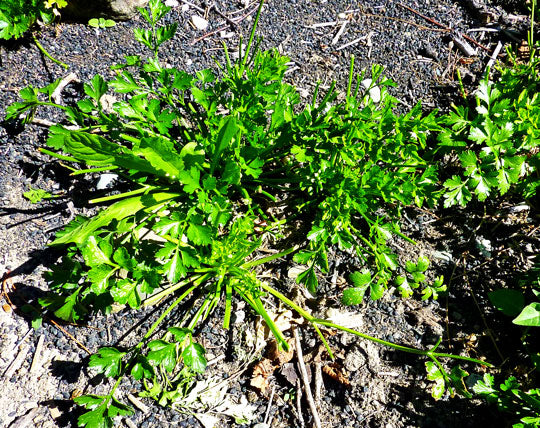Roll Out the Barrel
Wine lovers; spare a thought for the humble barrel. It has been around for a very long time, at least since the days of Imperial Rome, and it has been used in winemaking from the middle ages or earlier. In those times it was nothing more than a storage vessel. About the only alternatives to hold big quantities of fluid were pottery or animal hides, with their obvious limitations. We are now spoilt for choice. Nonetheless, the wooden barrel remains important, as any winery visit will show you. Why should this be? Barrels are difficult to handle, hard to clean, have many crevices that harbour microorganisms and they are expensive. Surely we should just dump them and move on.
Barrels have two vital attributes that save them from becoming an endangered species. One is their ability to mature and stabilise certain types of wine and the other is the tantalising aromas and flavours that they impart. Just after fermentation has finished, wine is a somewhat rough and ready product, especially if it is red. It can be very drying, hard and mouth puckering due to its tannin content. With time tannin molecules coalesce and some fall to the bottom as sediment, from which the overlying “refined” wine can eventually be separated. Over months this makes the wine softer and fruitier. This maturation process is aided by the entry of tiny amounts of oxygen into the wine because although barrels are watertight they are not completely airtight; as any stroll around a barrel hall will reveal.
If oxygen goes in something else must come out and the delicious “winey” aroma that you will smell occurs because some of the precious liquid inside the barrel has evaporated through the wood. This loss is the so called “angels’ share” and because of their rapacious desire the winemaker is forced to top the barrels up with a little extra wine every few months to stop the contents from becoming spoilt by oxidation. Yes, a little oxygen is good but too much is ruinous. This minute ingress as the wine is “breathing” also helps stabilise the wine’s colour. Barrels are also used to help mature certain sorts of white wines that are not strongly aromatic, such as chardonnay.
The aromas and flavours that barrels give depend on the type of wood and generally oak is favoured because it seems to complement a wide range of wine styles. Coconut, vanilla, clove, caramel, smoky and grilled bacon characters can be traced to individual molecules that occur naturally or arise during the barrel making process. The proportions of these vary depending on the type of oak and the method of construction. There are about 13 species of European oaks and 20 that are native to the Americas and they all have their own aromatic and flavour fingerprints.

Construction of a tonneau or barrel is the labour-intense and specialised business of a barrel workshop or tonnellerie. The wood is split into staves, each of which is especially shaped to fit into the exact rounded form of the barrel. After these staves have been assembled inside steel hoops, but before the “heads” or ends are put in place, the inside of the barrel is “toasted” by putting it over a brazier of flaming oak sticks. When this is finished the heads are then secured into place. The degree of toasting greatly affects the aromas and flavours of the barrel. All wood has a grain, which is formed from the tiny tubes that carry the sap between the roots and the leaves.
These tubes have to run along the length of the staves because if they ran through them the wine would leak out. Thus, the tonnellier or cooper must split the wood to make the boards and not saw it, which would risk cutting across the grain and opening into the small tubes. Most American barrels are made out of only 1 species of American oak, quercus alba or white oak. The tiny tubes of this tree are filled with thick coagulated sap that makes them watertight. Thus, the staves from this type of oak can be sawn, which makes barrel construction easier and cheaper than with European oak. White oak has a lot of vanilla flavour and barrels made of this are especially likely to impart such a character to the wine. But every barrel, no matter what it is made of, has a limited amount of flavour in it and once this has been leached out it will not add any more. This usually occurs when the barrel is between 3 to 5 years old. In spite of this it remains useful as a vessel for maturing new wine because it still allows” breathing” to take place.
Barrels are expensive and a decent French one might set you back about NZ$1200 whereas its American counterpart could be half that amount. Buying new barrels takes a significant bite out of a winery’s budget, not to mention cost of labour involved in using and maintaining them. It is not surprising that wily winemakers have thought up cheaper alternatives. Enter micro-oxygenation, aka “micro-ox”, and shavings, chips, blocks and planks of oak. Micro-ox consists of bubbling minute amounts of oxygen through the wine, usually in a large tank, to hasten its maturation. This is frequently combined with adding flavour by soaking pieces of oak in it. Such added oak may result in a hard or bitter taste and it is easy to “over oak” a wine. Such techniques are common and will have been used on most of the bargain bin wines that are enticingly on offer to trap the unwary consumer.
All our red wines, chardonnay and semillon are matured in French oak barrels from selected Burgundian tonnelliers. We use only a minority of new barrels to limit the amount of oak aroma and flavour pickup as we want our wine to speak for itself; to tell its tale of our soil, climate, grape varieties, and traditional winemaking methods. Give the humble barrel a thought when you next savour a glass and see if you think it’s doing a decent job. Oak is a good servant but a bad master!
The Books
Some time back we were approached by Random House and it ended up publishing two very different books about us. These were released in the last newsletter but at that stage the media had not had a chance to see them. Now it has commented and the books have been very well received. In fact, The Vintners Table has been named as the Best Local Cuisine Book in New Zealand the 2014 Gourmand World Cookbook Awards. This means it will go on to be judged against the other country winners in The Best in the World Gourmand Awards. You can still purchase this and The Truant from Medicine on our mail order. Remember, our proceeds from The Truant go to the New Zealand Brain Research Institute Ltd.
The Vintners Table
This is the tale of the pioneering Pegasus Bay winemaking family, the story behind its very individual wines and a raft of special recipes from its award winning winery restaurant.
Amazing and accessible recipes – Pegasus Bay winery and restaurant are unique.
— The Press
Punching well above their weight – told eloquently.
— NZ Herald
Trailblazing Waipara winery.
— Viva Magazine, NZ Herald
A top dining destination – Recreate the Pegasus Experience at home.
— New Idea
Delicious recipes.
— Hospitality Business
Great read.
— Herald on Sunday
Leading artisan producer – their wines are the toast of the country.
— East Life
The Truant From Medicine
This is the true story of how a fresh-faced young Dr was unwittingly lured into the world of wine by a nurse and of their many adventures among patients and vines while establishing Pegasus Bay Vineyard and Winery.
Irreverently funny – a great read that will be enjoyed by all walks of life.
— New Zealand Winegrowers Magazine.
The smell of authenticity leaps off the page with the same allure as the flavours of the riesling made by the family.
— Joelle Thompson’s Online Wine Magazine
Exceptionally well written.
— Northern Advocate
Fascinating memoir.
— Hawke’s Bay Weekend
Cleverly and wryly humorous.
— Wanganui Chronicle
Educational on a complex and fascinating subject.
— Bay of Plenty Times
Wonderfully entertaining memoir.
— Plains FM
Amazing story – brilliant read – you have to get the book!
— NewsTalk ZB
Thinning or Trimming
Have you ever found that after the festive season you need to shed some of the excess bounty that you have mysteriously developed, in spite of your best efforts? We have and it happens to us virtually every year. Sometime in January we need to look at thinning down to a reasonable weight. But just achieving that target isn’t the end of the matter because inevitably we will be out of trim. Yes, we will need to trim up. This all occurs around the season of veraison, a word that has an almost festive ring about it. But this is a viticultural term and we are talking about our grapes because we are models of self-control and the festive blowout would never effect us personally, well almost never. But the secret of thinning grapes is rather like the success of getting rid of the extra festive fat; it is all a matter of timing.

Nature is bountiful, often giving the vigneron a crop that is too large for the vine to nurture properly and if left then the resulting wine will lack concentration and ripe flavours. Should the crop be thinned too early in the season, when the vine has its “mind” set on enlarging the fruit it will “outwit” you by just bloating the remaining berries. The wine will be watery. If you leave thinning too late the vine will have wasted a lot of valuable energy ripening fruit that will be wasted and it won’t have the resources to benefit what you have left. Thinning is best done when the vine changes from the growing to the ripening mode and this is when veraison first appears. It is not as though the berries do not enlarge after veraison but they do not grow by adding more cells, they merely become filled with delicious ever ripening juice.
Veraison is signalled when a berry softens, swells a little and changes colour. This is easiest to spot in black grapes because they turn pink. But veraison does not occur in every berry, bunch or plant at the same time. It is a patchy process, a bit like house lights in a city being turned on at night. In daylight none are visible but by dark virtually all are shining. It is a matter of judgement when to thin a block of grapes but ideally it is very early in veraison.
But that is not the end of the matter. Like schoolchildren, all grapes are not all created equal. While the majority mature normally, a few are slow developers and in the vinous world these can remain hard and bitter. They hold the others back and need their own special treatment. Here the similarity ends because the callous viticulturist trims these off when veraison is very well advanced and it can be seen what is lagging. This so-called green harvest is not about reducing crop but about obtaining an even degree of ripeness as this makes the best wine.
As you may know from personal experience, thinning and trimming involve a lot of hard work. In the viticultural world this may not be necessary in warm or hot climates where bigger crops can be ripened and even straggling fruit can make the grade. In a cool climate, however, it is a vital step on the road to quality. Good wine takes time and a lot of effort on the way!

Chateau Mouton?
If you are wine lover then you will doubtless have heard of Chateau Mouton. It is one of the most famous and expensive red wines in the world and 1 of the 5 “first growths” in the premier Bordeaux winegrowing district of France. Even if you haven’t been lucky or well-heeled enough to taste it we know that you would love it: you would love Mouton. But we have a question for you; “What do Mouton love?” A few weeks ago we wouldn’t have been certain but now we know. The answer is parsley, and to be precise, flat leafed or Italian parsley. It is unfortunate that we found out because it was something of a mini disaster.

We have our own vegetable and herb garden that we use to supply Pegasus Bay Restaurant. A couple of weeks ago one of our chefs popped out to get some parsley, only to find that someone or something had taken it all; well, almost all. What we were left with were a few short stalks shorn off just above ground level. Our entire parsley patch had disappeared – what a culinary disaster! Could it have been a desperate customer or perhaps a rabbit? The answer was not long in appearing for round the corner trotted a couple of contented looking, plump moutons.
The culprits looked very sheepish (indeed mouton is the French word for sheep) and were clearly returning to the scene of the crime intent on more mischief. There was a momentary thought that they should pay for their misdeeds by being served up on the menu as auto-garnished moutons with croutons but because they had not touched anything else they were clearly our favourite type of customers: discerning diners.
We, thus, chased them back to where they belonged and the hole in the fence was repaired. Guess what? We left them alone but within a few days they found their way back to their parsley home, wagging their tails behind them. It seems that parsley is more addictive than weed!
The Christchurch earthquakes had a very destructive effect on restaurants and a large proportion of the hospitality staff were forced to leave and find work. There are now almost as many restaurants in the city as BE (before earthquake) but in the interim many of the people have settled elsewhere and there has been a desperate shortage of both kitchen and front of house staff, especially those with special skills and training. Because of this we were reluctantly forced to close some days during our busiest summer period and, even when open, we had to restrict our number of diners. For this we apologise profusely. The good news is that we now have a full complement of talented and enthusiastic staff and will open for lunch every day, except between 20 July and 16 August inclusive when they will take a break for R and R. Over this period the tasting room will be open daily between 10am and 5pm. It is best to telephone 03 314 6869 extension 1 to make a restaurant reservation but feel free to pop in and taste a range of wines at any time. We will be delighted to see you.
From the Prescription Pad
A few days ago I was stunned to see that the international section of our newspaper carried a headline that said “Alcohol Has No Health Benefits After All”. Underneath was reprinted a miserable little paragraph from The Times in London. It said that a group of researchers from University College London had questioned the reputed health benefits of mild-to-moderate drinking. The anonymous “they” had suggested that in earlier studies, groups of teetotallers, with whom imbibers were compared, may have contained a disproportionate number of ex-heavy drinkers or otherwise ill people who had chosen not to drink on medical grounds. I was flabbergasted, not because of the researchers’ hypothesis, but by the lousy journalism and blatant misrepresentation of their hypothesis. I guess I should not have been surprised because the rampant anti-alcohol movement has been making traction in the media but what a biased, junk headline without reference to any researcher’s name or any published study!
Most newspapers have little enough international news and why waste valuable space on such attention seeking and passé trivia? The proposition that the researchers raised has been around for more than a quarter of a century and there have been numerous trials designed to test its validity. None have succeeded. Meta-analysis, which is the trolling of literature and lumping together of other people’s studies, has suggested that this could be the case but large carefully performed investigations continue to show better health and life expectancy outcomes in mild to moderate drinkers.
When it comes to the type of alcoholic drink, numerous studies have confirmed that wine drinkers have the best health and longevity but they are a different subset of the population to beer and spirit drinkers, generally having healthier lifestyles and diets. In spite of theoretical reasons why wine should be better for you, it has been difficult to absolutely prove that it is the cause of the observed effect. For example, a recent German study has shown that a daily beverage rich in anthocyanins, natural molecules found in wines (especially reds), improves antioxidant capacity and antioxidant enzyme activities of blood from volunteers, thus theoretically protecting against oxidative stress, which is a hallmark of ongoing atherosclerosis and ageing. This, however, doesn’t prove that it will make you healthier or live longer. In spite of such tantalising and accumulating experimental evidence, my medical colleagues and the various medical colleges are very reluctant to sanction any drinking but are happy to promote unsubstantiated advice about patterns of drinking, such as drink free days, weekends and weeks.
There is not a single scientific work showing that such periods of abstention lead to better health outcomes in mild-to-moderate imbibers. In fact, in a study published this year, the incidence rate of heart attack was increased in the hour following drinking in those who drank irregularly but not in daily drinkers. Binge drinking has been shown to be particularly damaging, and in a series of patients with coronary artery disease published in Circulation it increased the death rate by hundred percent compared with those who did not binge.
But scientific evidence of health benefits dates back only a few decades while wine has been around for thousands of years. If its effects on society are overwhelmingly negative, why is it still with us? Surely we would have dumped it by now. Is it just that people like to enjoy themselves? If so, that wouldn’t necessarily be evil. When was happiness a bad thing? But there is another reason, which nobody seems to talk about. Alcohol has very positive social benefits. Most people drink when they are in company; they are “social drinkers”. By decreasing inhibition and anxiety, alcohol relaxes people and enables them to mix more freely. Cold glances, stony faces and reserved silence are encouraged into relaxed smiles and friendly conversation. The merry chatter and raucous laughter of most parties are a tribute to the effectiveness of alcohol in promoting social interaction. But it is not only in large groups that wine has such a positive effect and the successful conclusion of many a liaison, business deal and international treaty has been aided by a persuasive libation. Unlike accidents or assaults, benefit is not something easily defined or measured but it constitutes a major, positive social effect that the naysayers never take into account.
The negative attitude of a section of the press and society to alcoholic beverages is summed up in the term booze, which was first used to refer to wine. Yes, it was coined by thirsty British soldiers fighting in north-east France during World War I to refer to the miserably thin red wine that they used to slake thirst and lessen their misery. It came from the nearby Champagne town of Bouzy. This is ironic because a number of published studies show that wine is the least abused of alcoholic drinks in the western world.
But you would have to have your head in the sand not recognise that there is a problem with excessive and binge drinking in some sections of our society, although it is probably no worse in New Zealand than in many other countries. The solution is not to reduce alcohol consumption through legislation. This is just too simplistic. It never works as many failed attempts have shown and it penalises responsible and irresponsible drinkers alike. An alcohol free country, surely the goal of the neo-prohibitionists, does not ensure a happy, healthy society, as watching the news from the Middle East testifies. No, we need to change our patterns of drinking. This is something that society must do and not expect the nanny state to legislate up a solution. We are all part of society and need to encourage the consumption of sensible amounts of alcoholic beverages with food, which helps moderate alcohol absorption. And what goes best with food? Why, wine of course. In Europe wine is regarded as a food and its consumption is largely limited to the table.
Never forget, however, that moderation with wine is as important today as in 375 BC when Eubelus said “Three bowls only do I mix for the temperate; the first for health, the second for love and pleasure and the third for sleep. Then the wise guests go home. The fourth bowl belongs to violence, the fifth to uproar, the sixth to drunken revel, the seventh to black eyes, the eighth to the policeman, the ninth to biliousness and the tenth to madness and hurling of the furniture.” Things haven’t changed much in two and a half thousand years; have they?

Recent Seasons
Drought conditions were staved off by a mid-summer downpour in 2008 but then beautiful weather followed. The growing conditions of the 2009 vintage were amongst our best and we were delighted with both the reds and whites. The 2010 season was marked by a cloudy and indifferent late spring and early summer. In February, however, the sun began to shine and we had 3 months of perfect weather, resulting in excellent ripeness and levels of natural acidity. The 2011 vintage followed a very warm season and was one of the earliest we have experienced, producing beautiful physiological ripeness. It was a complete contrast to the following season and 2012 was one of the slowest ripening vintages that we have seen. Dry weather in late autumn allowed a prolonged hang time, which has produced a splendid spectrum of flavours and a lively freshness. A mild spring, a warm summer and a long lingering autumn created a perfect prelude to the 2013 vintage. Autumn rain in 2014 caused us to pick earlier than usual but the early-season ripening of the grapes was precocious so that the harvested fruit was physiologically ripe. Later noble botrytis flavoured the aromatic whites.
